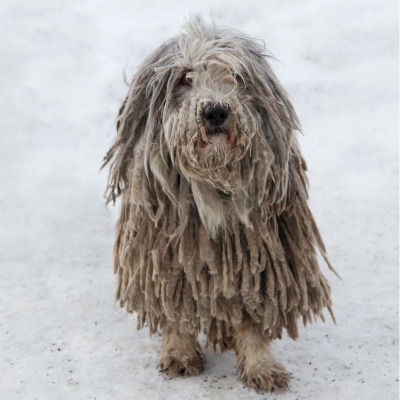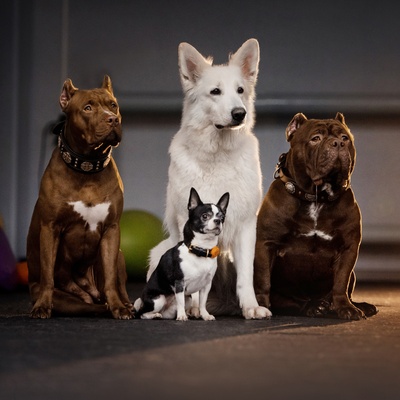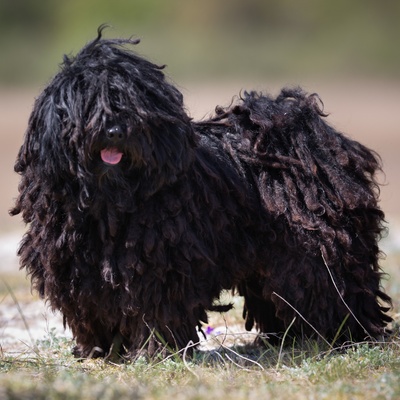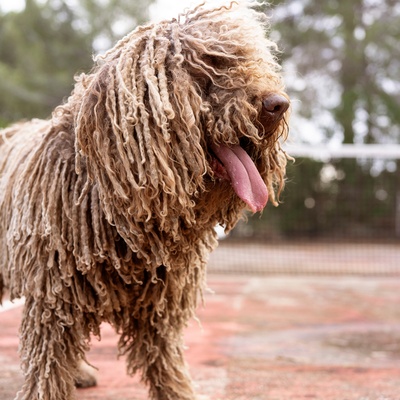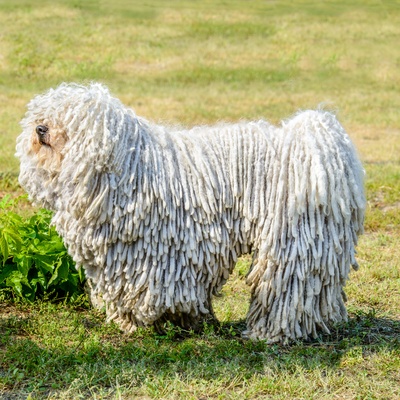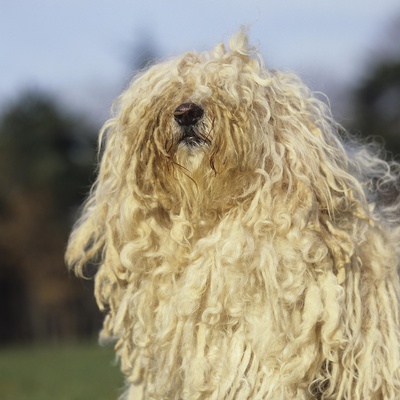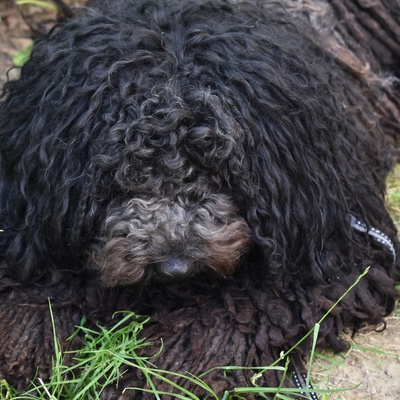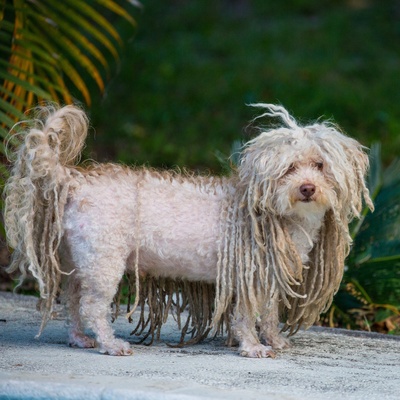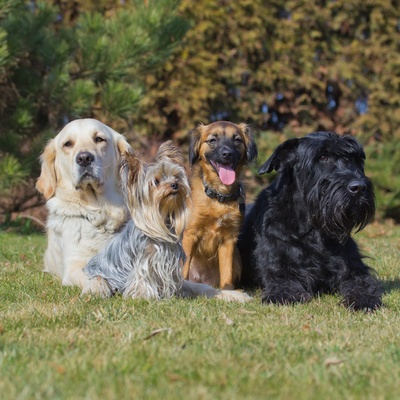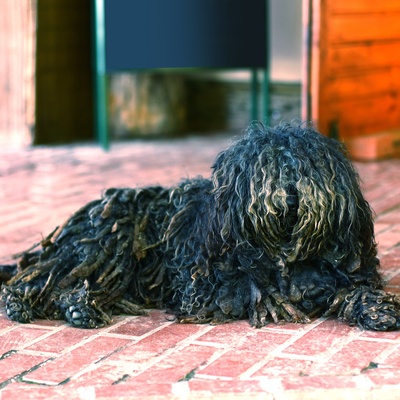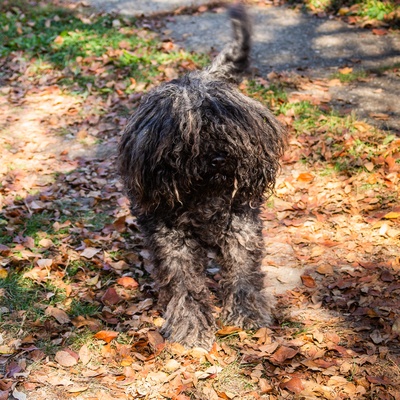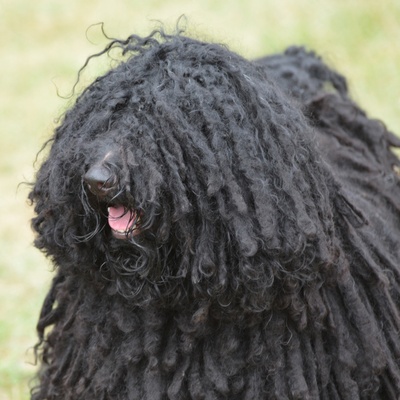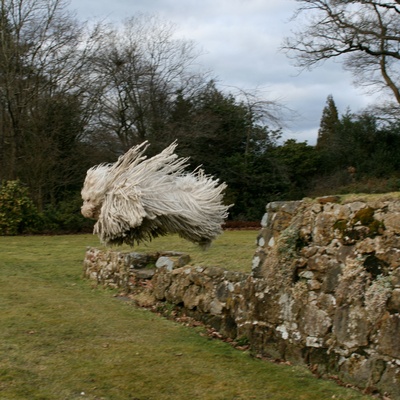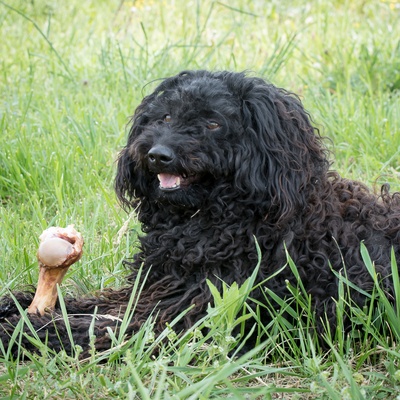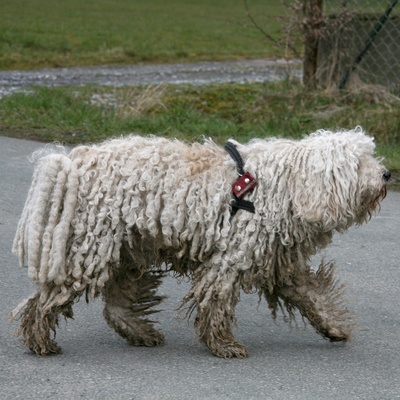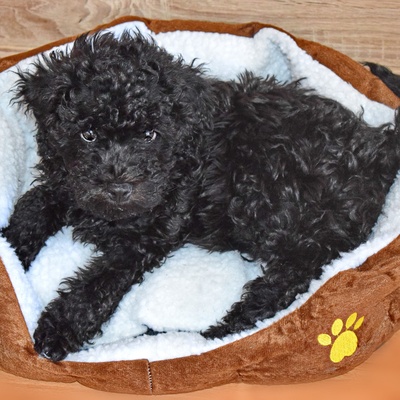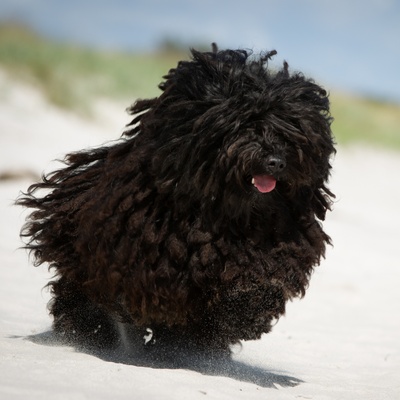Introducing the Puli Dog
Find out everything you need to know about the Puli: its characteristics, its behavior, its education, its price.
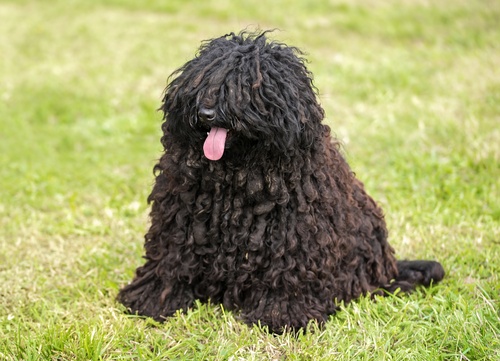
Find out everything you need to know about the Puli: its characteristics, its behavior, its education, its price.
The Puli Dog, also known as the Hungarian Puli, has a history dating back over 1,000 years. Originating from Hungary, this breed was primarily used as a herding dog. Pulik were prized for their agility, intelligence, and distinctive corded coats.
Today, the Puli Dog is perceived as one of the most unique and beloved breeds worldwide. Their bravery and versatility make them excel in various roles, from herding to companionship and dog sports. Pulik are known for their loyalty and affectionate nature, forming strong bonds with their families. They are sociable and display their affection through constant companionship and playful behavior.
This section outlines the unique features of the Puli Dog.
The Puli Dog belongs to the herding group, including breeds like Border Collies and Australian Shepherds. These dogs are known for their intelligence, agility, and strong work ethic. Pulik is lively and energetic.
The Puli Dog is a medium-sized breed. They typically stand between 16 to 17 inches at the shoulder and weigh between 25 to 35 pounds.
Pulik has a unique, long corded coat. Their fur forms natural cords that can reach the ground, providing protection from the elements and predators.
The Puli's coat comes in various colors, including black, white, gray, and occasionally fawn. The dominant color is usually black, but other shades are also seen within the breed.
Pulik adapts well to various living environments, whether in an apartment or a house with a yard. They thrive best with plenty of space to roam and exercise.
Pulik are friendly and sociable dogs. They are great with children and generally get along well with other animals. Early socialization is key to ensuring they are well-rounded and confident.
Pulik are generally healthy dogs. However, they can be prone to hip dysplasia and certain eye conditions. Regular veterinary check-ups are essential to maintain their health.
Pulik are intelligent and eager to learn, responding well to positive reinforcement. Their intelligence and agility make them excellent candidates for dog sports and advanced training.
We can help!
Every dog has its own character, and so do you. Making the right choice will ensure his well-being and yours.
Take our quiz to find out which breed is right for you, based on your personality, lifestyle, location and many other criteria.
Don't wait any longer and take the quiz to find out the answer!
The Puli Dog is a medium-sized breed, known for its distinct, corded coat that gives it a unique appearance. These cords can be black, white, gray, or fawn. The Puli's face is characterized by its expressive dark eyes and V-shaped ears that hang down, enhancing its endearing look.
A Puli Dog typically stands between 16 to 17 inches for both females and males. Females usually weigh between 22 to 30 pounds, while males weigh between 25 to 35 pounds. Pulik grow relatively quickly, reaching their full size and weight by around 12 to 18 months.
The Puli Dog has a unique, long corded coat. The cords form naturally and can reach the ground, providing protection and insulation. The fur is dense and can be somewhat rough to the touch, creating its distinctive look.
The Puli's coat comes in a specific color palette, including black, white, gray, and occasionally fawn. Black is the most common color, but other shades are also seen within the breed.
The Puli Dog's coat requires regular maintenance due to its length and density. Pulik do not shed typically, but their cords need separating to prevent matting. Regular brushing and thorough drying after baths are essential to keep the coat clean and healthy.
The Puli Dog is balanced and well-proportioned. It has a slightly rounded head with a well-defined muzzle. The dark, almond-shaped eyes are expressive and alert. V-shaped ears hang close to the head. The body is muscular and sturdy, built for agility and endurance.
Pulik are known for their loyalty, protection, and affectionate nature. They are highly energetic and form strong bonds with their families.
There are over 400 registered dog breeds, classified into 10 groups. The Puli Dog belongs to the herding group, including breeds like Border Collies and Australian Shepherds. These dogs are known for their intelligence, agility, and strong work ethic. Pulik has developed instincts, remarkable intelligence, and a docile, affectionate nature, primarily excelling in herding and dog sports.
Pulik are lively, energetic, and affectionate dogs known for their playful behavior. They form strong bonds with their owners, showing affection through constant companionship and loyalty. Pulik need a present and attentive owner to thrive and develop properly.
Pulik are very sociable and generous dogs. They get along well with humans and are excellent companions for children due to their friendly and tolerant nature. Early socialization is crucial to ensure they develop sound social skills and become well-rounded, confident dogs.
Take the test and find out the dog breed that matches your personality and lifestyle.
Pulik has the potential to adapt to various living situations, including apartments, houses, urban, and rural environments. They require significant attention from their owners to thrive. Daily walks are essential, with at least two walks per day, each lasting around 30 minutes.
While adaptable, Pulik benefits greatly from an outdoor environment where they can satisfy their curiosity and expend their energy. Access to a yard or open space allows them to engage their keen sense of exploration and stay physically active, which is crucial for their well-being.
Pulik are highly intelligent and quick to learn, responding well to positive reinforcement and structured training. Due to their strong herding instincts, equipping them with a GPS collar is advisable to prevent escapes.
Pulik has great listening skills and thrives on consistent training and mental stimulation. Early socialization is essential to develop their social skills and adaptability.
The Puli Dog is generally healthy. Daily care is essential to maintain its health and prevent infections. Regular grooming, proper diet, and routine vet check-ups are key.
Pulik are robust but can be prone to hip dysplasia, eye problems, and allergies. Typical lifespan is 12 to 16 years.
Regular vet care, including vaccinations and deworming, is crucial. Daily care includes brushing their cords, cleaning ears weekly, brushing teeth several times a week, and trimming nails monthly. Pulik are not hypoallergenic.
Like all dogs, Puli Dogs have specific nutritional needs. A balanced diet is essential for maintaining their vitality and strength. Proteins and vitamins are crucial in meeting their nutritional requirements. We recommend feeding your Puli Dog high-quality kibble, which provides a balanced dietary foundation. If additional protein is needed, you can supplement their diet with lean white and red meat, but it's important to limit fats to keep them healthy.
The Puli Dog is well-regarded for its unique corded coat and herding skills. There are several breeders available. It's important to consider several factors before adopting.
Before adopting a Puli Dog, there are some important points to consider. First and foremost, you need to check that the breeder is reputable. This means visiting the breeder's premises to assess the living conditions and behavior of the dogs. Responsible breeders will provide transparent information about the puppy's health and any genetic illnesses in its lineage.
Lastly, mandatory electronic identification, like microchipping, is not always mandated at the federal level in the United States for cats and dogs. But microchipping is widely acknowledged as a successful way to permanently identify pets and increase the possibility of reuniting lost pets with their owners, even in the absence of universal regulations. As a pet owner, it is advised to inform yourself about municipal laws to ensure the safety and wellbeing of your pet.
The cost of a Puli Dog varies based on lineage, pedigree, breeder reputation, and age. Typically, Puli puppies cost between
and
Annual maintenance, including vet fees, food, and grooming, costs around
to
Choosing a dog that matches your personality and lifestyle will ensure your well-being and his!
